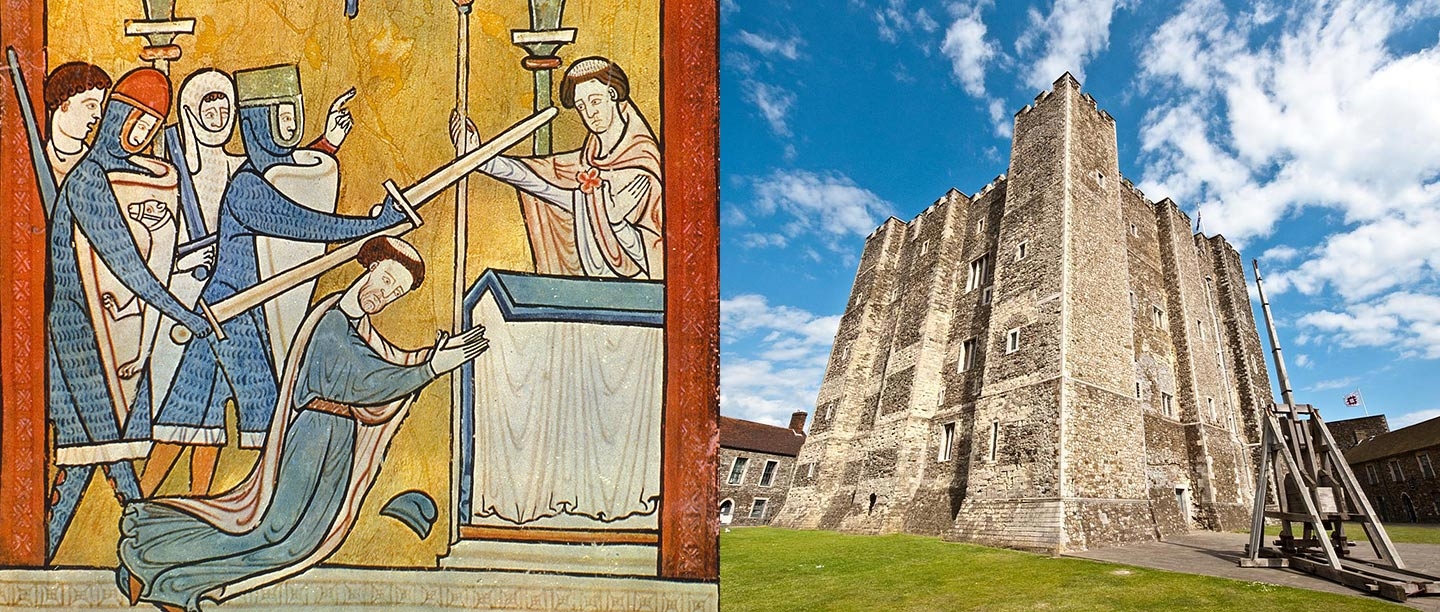King and archbishop
In 1162 Henry II – King of England, Duke of Normandy and Aquitaine and Count of Anjou – made his Chancellor and close friend, Thomas Becket, Archbishop of Canterbury. As Chancellor, Becket had proved devoted to Henry’s interests, and the king thought he was just the man to help him extend royal authority over the Church.
It is difficult for us today to grasp the extraordinary status that the Church then had. In addition to its spiritual authority and near-monopoly over literacy and education, it got richer with each passing year as the faithful gave it money and property. It was controlled from Rome, and ordained churchmen could only be tried by church courts, no matter what crime they committed. Henry wanted to bring them under the authority of the Crown.
However, the king was to be unpleasantly surprised. Once in office, Becket went over to the Church’s side heart and soul. He became convinced that protecting it from any earthly authority was a sacred duty. When Becket refused to agree to Henry’s proposed legal reforms, he was forced to flee to France in 1165. Five years later, however, Pope Alexander III brokered a compromise, and in 1170 Becket returned to England.
The murder
But the row soon broke out again when Becket excommunicated three churchmen, including the Archbishop of York, for crowning Henry’s eldest son as joint king – a task that should have fallen to Becket himself. When Henry – in Normandy at the time – heard of Becket’s action, he exploded with rage. He berated his household for being a pack of ‘miserable curs and traitors’ who stood idly by while a ‘low-born priest’ treated their king with contempt.
Hearing this, four of his household knights saw an opportunity to prove their loyalty. They left the court in secret, crossed to England and reached Canterbury on 29 December. They tried to arrest Becket on the king’s behalf, but he refused to come quietly. So they resolved to make the arrest by force as night fell. They caught up with the archbishop as he entered the cathedral, while the monks were chanting Vespers. Becket clung to a column, the confrontation became violent, and the knights cut him down with their swords. Shocked by what they had done, they fled into the night.
The murder shook everyone, especially Henry himself. Becket had been a controversial figure in life, but in death he was regarded as a martyr for the rights of the Church, and people began to pray to him. Pilgrims started to visit his tomb, in the cathedral’s vast crypt. People who had prayed to him reported miracles, and in 1173 the pope declared Becket a saint.
The situation could hardly have been more embarrassing for Henry.
Henry’s great crisis
In 1173–4 crisis engulfed Henry’s regime. His wife, Eleanor of Aquitaine, encouraged their two elder sons, Henry and Richard, to rebel against him, demanding a share of power. They allied with his enemies, Louis VII of France and William II of Scotland, who launched invasions of his lands.
It must have seemed like a divine punishment, and Henry realised that the time had come to make his peace with Becket. In July 1174 he performed an elaborate act of penance at Canterbury. He walked into the city barefoot; he prostrated himself before Becket’s shrine, and was whipped by every monk of the priory; and he spent the night in prayer and penitence by the tomb of his former friend.
By a truly extraordinary coincidence, the next day Henry heard that William of Scotland, who had invaded Northumberland, had been captured. Within a few months the rebellion was over, his sons had begged his forgiveness, and Queen Eleanor had started what was to be a very long term of house-arrest at Old Sarum and Winchester. It seemed clear that Becket, and God, had accepted the king’s repentance.
These extraordinary developments turned Henry’s relationship to the new Becket cult around, and he returned to pray at the shrine many times. But it took a further series of unforeseeable events to bring about the transformation of Dover Castle.
Royal pilgrims
Up to this point, Kings of England had never spent much time in Kent. For one thing, Dover was not on their normal route to Normandy – they usually sailed from Portsmouth or Southampton. For another, the Crown held very little royal land in the county.
However, it stood on the shortest sea-crossing from the Continent, and foreign pilgrims were arriving there on their way to Becket’s shrine. In 1177 Philip, Count of Flanders, came; Henry met him at Canterbury and escorted him back to Dover. And in the summer of 1179, Louis VII of France himself arrived. His only son, the 14-year-old Philip, was seriously ill. Louis had known Becket well, having sheltered him in France. Faced with this supreme crisis, he resolved to travel to Canterbury to pray at Becket’s shrine.
His decision to travel to England took Henry II completely by surprise – news of Louis’ imminent arrival only reached him when the French king was already on the road. Henry was obliged to dash overnight across country, arriving just in time to greet Louis on Dover beach. It was, in effect, the first official visit by a foreign head of state in English history, and working out the correct protocol must have been a tricky business.
So Henry escorted Louis, together with a large suite of nobles and courtiers, to St Thomas’s shrine in the crypt of Canterbury Cathedral, where the kings prayed together. Louis then returned to Dover, where he spent the night before embarking for France.
Dover Castle
At the time of this visit, Canterbury Cathedral was being rebuilt, with the greatest possible splendour, after a devastating fire.
But as Henry must have realised, Dover Castle, which stood on a hill overlooking the port, was another matter. It must have been quite large, and there were elaborate arrangements to provide it with a garrison. But it had never been a royal residence, and the accommodation was probably rather basic. And Henry had been obliged to receive a fellow monarch there.
It seems to have been these extraordinary events that prompted him, almost immediately after Louis’ visit, to undertake one of the greatest building projects of the Middle Ages in England. Between 1180 and his death in 1189, Henry carried out the first stages of a massive, and costly, rebuilding of Dover Castle. Continued by his sons Richard and John and completed under Henry III in the 1220s, the rebuilding turned Dover into the second largest fortress in Britain, after Windsor.
A palatial residence
At the centre of the castle, Henry II built the ‘great tower’, the last in a long succession of palatial keeps in France and England going back to the 10th century.
Henry’s ancestors on both sides had all built such structures. Once seen primarily in military terms, as ‘last redoubts’ within castles, they are now understood to have fulfilled a variety of purposes – as secure residences, as palatial spaces for ceremonial, as symbols of lordship and power. Henry himself built several, including those at Peveril Castle in Derbyshire, Orford in Suffolk, Scarborough and Newcastle. He was consciously using a historic building-type, associated with his ancestors.
The great tower was so big as to be visible from far out at sea – a symbol of authority to all approaching visitors. Its colouring, with bands of white stone against knapped dark-grey rubble, heightened the effect.
Internally, several aspects of the tower’s design are unusual. The main entrance is not at first-floor level, as was the norm. Instead, a long entrance route was deliberately contrived: the stairs led through an elaborate forebuilding to a landing at second-floor level, from where stairs led down again into a grand hall. The keep has two main compartments, so its plan can be seen as a hall and chamber on both the first and second floors. Curiously, it was built without fireplaces, and was heated by braziers and central hearths.
All these untypical aspects of the design suggest that the tower was intended for grand entertainment and state occasions, more than for everyday life. A suitable setting for ceremonial entrances and exits, it was also an impressive residence where high-ranking pilgrims to Canterbury could be received and stay in regal surroundings.
The new tower may have been ready for use by 1185. Henry II visited several more times, and received a number of grand visitors there, including the Patriarch of Jerusalem in 1186. However, for most of the time the vast tower was probably little used.
Cult and castle
For a long time, historians puzzled over Henry’s reasons for building the great tower at Dover. Some saw it as militarily obsolete, likening it to a battleship in the nuclear age.
But in the early 2000s, English Heritage commissioned new research on Dover in the 12th century, in preparation for a project to re-present the great tower as it may have appeared then. The research shed much new light on the castle’s history, in particular that by Professor John Gillingham, who pointed out the links between the castle and the Becket cult, and the likelihood that this explains why it was built.
History is an accumulation of chances. If Becket and Henry had not fallen out, if Becket had not been murdered, if Henry had not done penance, if Prince Philip had not fallen sick, and if Louis VII had not made his desperate decision to come and pray at Canterbury, the great tower would probably never have been built.
However, it was – and eight centuries later it survives as a magnificent legacy of these strange events. Rising above the cliffs, town and harbour like part of the landscape, it greets all those who arrive. In its time a reassertion of a royal authority which had been severely shaken, today it is a familiar and well-loved symbol of England.
By Steven Brindle
Find out more
-
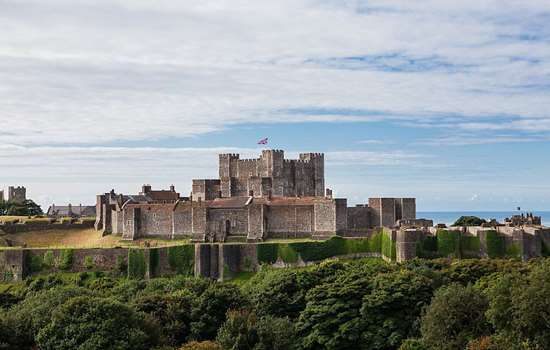
Visit Dover Castle
Visit Dover Castle to discover Henry II’s great tower for yourself, and explore 900 years of history.
-
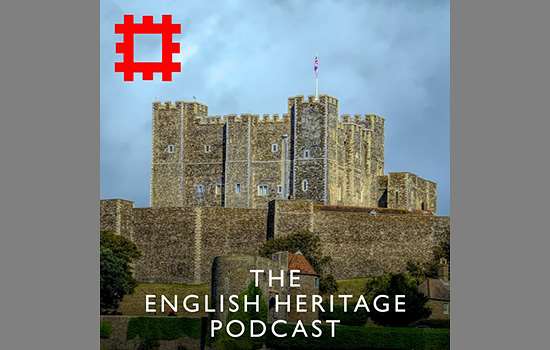
The English Heritage podcast: Becket’s murder
In this episode of our podcast, Steven Brindle looks back at the murder that shook medieval Europe, and how the building of Dover’s great tower can be traced back to it.
-
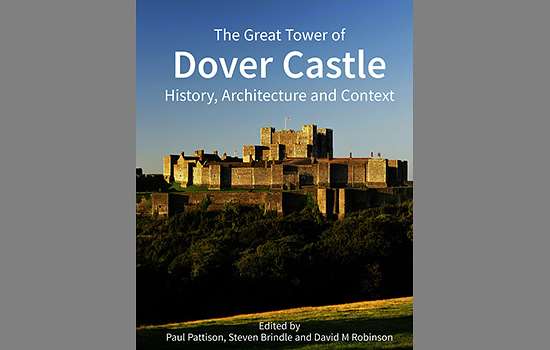
The Great Tower of Dover Castle
This newly published book explores the history and development of the great tower in detail, from its building in the reign of Henry II to the present day.
-
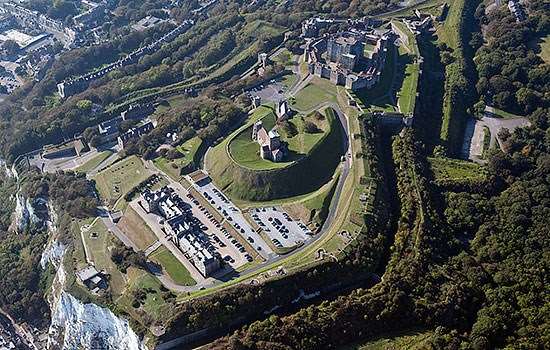
History of Dover Castle
Learn about the long history of the castle, from its likely origins as an Iron Age hillfort, through its development as a great fortress, to its secret role in the Cold War.
-
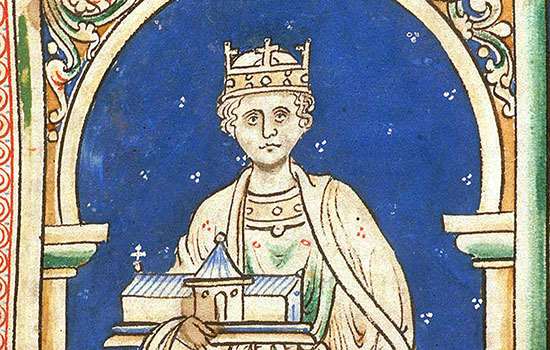
The Angevin Empire
King Henry II, who built Dover Castle’s great tower, also created the largest European empire of his age, stretching at its height from Scotland to the Pyrenees.
-
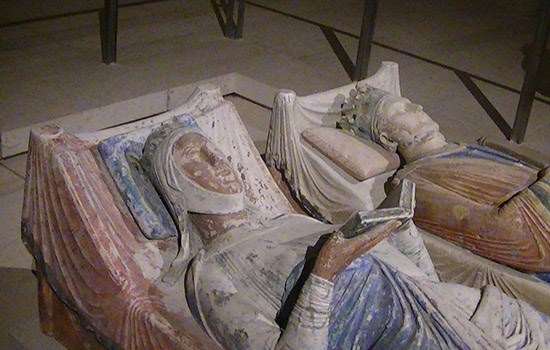
Eleanor of Aquitaine
Eleanor of Aquitaine was queen in turn of two great medieval European powers, France and England. Read more about her life and the role she played in the politics of her day.
-
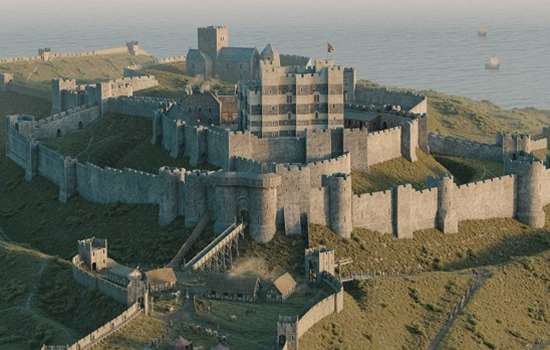
The Sieges of Dover
Read about the two sieges of Dover in 1216 and 1217 during King John’s reign, and the circumstances that gave rise to this attack.
-
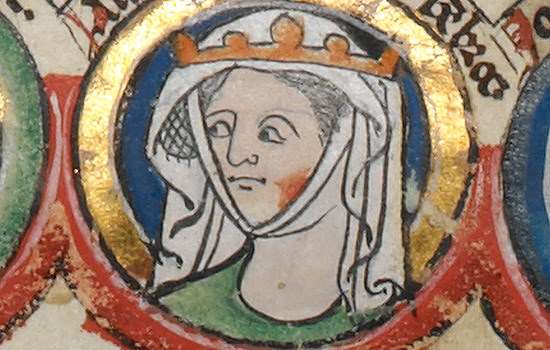
Eleanor de Montfort and the Siege of 1265
Caught up at the centre of a civil war, Eleanor de Montfort held Dover Castle against the king in 1265 after her husband and eldest son were killed in battle.
Further reading
F Barlow, Thomas Becket (Berkeley, CA, 1990)
S Brindle, Dover Castle (English Heritage guidebook, London, 2012)
S Brindle, P Pattison and D Robinson (eds), The Great Tower of Dover Castle (Liverpool, 2020)
P Draper, ‘Recent interpretations of the late-12th-century rebuilding of the east end of Canterbury Cathedral and its historical context’, in Medieval Art, Architecture & Archaeology at Canterbury, ed A Bovey, British Archaeological Association Conference Transactions 35 (Leeds, 2013), 106–15
C Harper-Bill and N Vincent (eds), Henry II: New Interpretations (Woodbridge, 2007)
WL Warren, Henry II (London, 1973; new edn London and New Haven, 2000) (accessed 2 Dec 2020)
Journal of the British Archaeological Association, 173 (2020) (special issue to mark the 850th anniversary of Becket’s murder, containing studies of several aspects of the Becket cult) (subscription required; accessed 2 Dec 2020)
Top image: the murder of Thomas Becket at Canterbury Cathedral, depicted in a late 12th-century English psalter (© Archiv Gerstenberg/ullstein bild via Getty Images)
